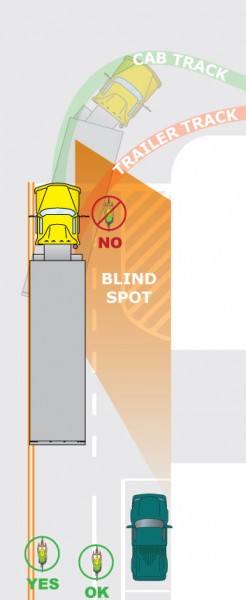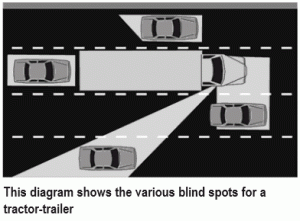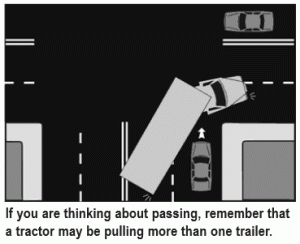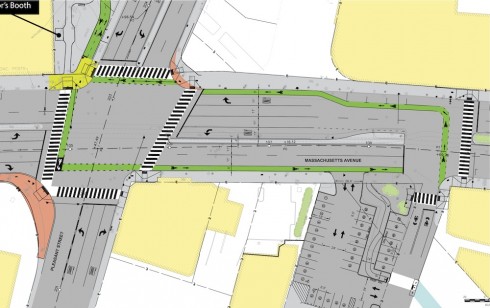The Town of Arlington, Massachusetts has proposed changes to the intersection of Massachusetts Avenue with Mystic Street/Pleasant Street (really one street, which changes name at the intersection).
I’ve posted a video of a bicycle ride I took through Arlington Center, here:
This video has now been extended with a clip of a second ride through the intersection in May, 2017, when the changes to the intersection were mostly complete.
The ride is easy, and especially because the left turn for Swan Place can only be made when traffic isn’t approaching from the east on Massachusetts Avenue anyway. So, I simply turned into the through lane and kept going. If the leftmost through lane is the only one open, as in my video, it’s an easy merge into the next lane, because the traffic will only be just starting up at the traffic light, at the same time a bicyclist has to merge.
Why Do They shoot Themselves in the Foot?
So, why do other bicyclists in the video shoot themselves in the foot, threading their way along in the narrow space at the right side of the right turn lane — slow, and complicated — and potentially far worse, risking getting themselves right-hooked on the corner?
Just as a refresher about the right hook, CommuteOrlando in Florida has the page, What Bicyclists Need to know About Trucks, including the graphic at the right.
The advice is clear and simple: don’t overtake into the danger zone next to a truck (or a car, or a bus…). The two drawings below convey the same message. You may have seen them already.
Just in case you might discount the Orlando advice as Not From Here, the drawings below are copied from pages 100 and 101 of the Massachusetts Driver’s Manual (pages 22 and 23 in the PDF of Chapter 4).
All the people in control of the bicycles in my video are grown-ups. All of them will have had many years of experience in traffic, in motor vehicles. Almost certainly, most of them hold driver’s licenses. So, why should they be intentionally and blatantly doing exactly what the Driver’s Manual warns against? These bicyclists are violating the most fundamental principles of traffic safety, just because they happen to be riding bicycles.
To make a complicated explanation simple, it’s because they have been taught to be afraid of traffic coming from behind them, and to ignore other risks — even where those are serious and the risk of traffic from behind is very small. I’m reminded of a saying by the late, great Dutch traffic engineer Hans Monderman:
Never treat anyone in the public sphere like an idiot. If you treat him like an idiot, he will act like an idiot.
But, that’s another discussion. Let’s move on. To ride as I did and avoid the right hook:
- Check for traffic, and turn right from the path onto Swan Place.
- Turn left from the middle of the right lane on Swan place into the closest open lane on Mass. Ave.
- If necessary, merge right into the rightmost through lane. This is easy because traffic will be waiting at the traffic light ahead, and just starting up as you need to merge.
- Continue across Mystic Street and either keep going straight on Mass. Ave., or turn right at the far side of the intersection to go to the path.
About the Proposed Design
Now, moving on to discuss the proposed design: why should street design encourage exactly the behavior for bicyclists which is disparaged for motorists as deadly dangerous? Bicyclists are after all more vulnerable — so, we should also render bicyclists defenseless?
This design is what was installed as of May, 2017, with four significant differences, all of which I would count as improvements: There are no new parking places with a twisty path behind them on Swan Place, the green bicycle route extending from Swan Place starts nearer the middle of the right lane, it has a larger curve radius as it turns left onto Massachusetts Avenue, and the route from right to left across Mystic Street extends directly from the bike lane on Massachusetts Avenue rather than from the street corner.
Right hook collisions have become the single largest cause of bicyclist fatalities in the Boston area as designs which encourage passing on the right have become more prevalent.
Why does the proposed design have to formalize this suicidal behavior — and also, encourage motorists to turn right illegally from the lane to the left of the bike lane? Why can’t the design encourage other, more efficient and safer behaviors? Not only the one shown in my video, either. There are good off-road alternatives too. Please read on.
To understand the problems, it helps to look at the plan view, below. You can click on it to enlarge it.
The assumptions behind this drawing are clear enough: bicyclists are witless wonders, capable of only following a green, painted path — but on the other hand, capable of following it where it abruptly shifts right and left and goes around sharp corners. Motorists are 100% cooperative and attentive, and also have the superhuman ability to see bicyclists outside the range of their rear-view mirrors. We can forget everything we know about safety at intersections: painting the pavement green solves all problems. We can ignore the traffic law which requires right turns to be made from the right edge of the roadway.
Specifics: Westbound
Now, as to specifics, we start again at Swan Place, at the lower right. Here is what the proposed design would have bicyclists do.
- Bicyclists turn right onto Swan Place. Motorists backing out of the new, proposed parking spaces on the west side of Swan Place will back out into the path of the bicyclists.
- There is a shared-lane marking before the intersection. Good enough — bicyclists need to ride in the middle of the narrow lane, that’s the appropriate lane position to prepare a left turn, and that’s easy enough on this lightly-traveled street, BUT then the bike lane to cross Massachusetts Avenue is at the right side of the intersection! Bicyclists are being instructed to bear right, as if they are going to turn right onto Mass. Ave., and then abruptly swerve left. A bicyclist following this designated route needs to be looking back to the left for motorists approaching on Mass. Ave. and back to the right for motorists turning right from Swan Place. The bicyclist’s having first turned right makes it look to motorists as if he or she intends to turn right onto Mass. Ave., risking motorist mistakes and crashes. Bicyclists should instead simply continue across Mass Ave. in line with the shared lane marking. Then they only have to look left and right for traffic. With the traffic light proposed for the intersection, the way will probably be clear on a green light, though it’s best to look anyway. Or is that too simple, and too safe?
- Bicyclists are next instructed to continue straight across all the lanes of Mass. Ave, to the bike lane on the other side, and swerve sharply left to where the bike lane continues in the door zone of parked cars. The driver of a parked car checking whether the door would strike a bicyclist must look back at the right moment to see that a bicyclist has turned left and is headed for the door. This is worse because the corner in the bike lane is too sharp for bicyclists to negotiate, and they will cut the corner.
- Here, the bike lane also is directly behind vehicles waiting in the right turn lane. This requires motorists preparing to turn right to look in their right-hand rear view mirrors at just the right time, or else miss seeing the bicyclist.
- Where a right turn lane follows the parking spaces, the bike lane is striped to its right, leading bicyclists into a “coffin corner” where they can collide with motor vehicles, and can be swept under the rear wheels of turning trucks and buses.
- On the corner, the bike lane is interrupted. It resumes several feet to the right, around the corner. To reach it, the bicyclist again turns right to go straight. But here, there are separate signal phases for right-turning traffic, through traffic and the crosswalk. Which traffic signal is the bicyclist supposed to obey? A bicyclist turning right on the right-turn signal will immediately be in conflict with right-turning motor traffic if swerving left to cross Mystic Avenue. There is no space to wait before swerving left, so bicyclists will pile up on the corner when bicycle traffic is heavy — or more likely, will ignore the bike lane across Mystic Street and continue straight across, still risking the right hook. Is a bicyclist at the right side of the right turn lane permitted to go straight across on the pedestrian signal? on the through phase? Are motorists allowed to turn right on the through phase? Who knows?
- On reaching the far side of Mystic Street, a bicyclist has to take care, passing through the crowd of pedestrians waiting, and walking in multiple directions, but may then turn right and head for the path. On the other hand, a bicyclist continuing on Mass. Ave. has to go around another corner. It is very much simpler, faster and safer, as my video shows, to continue straight through on the road.
Now, granted, some — many — of the bicyclists using the Minuteman are children and novices, who would be more comfortable crossing Mystic Street in the crosswalk. BUT the design doesn’t offer any convenient way to get from the street to the crosswalk, even though the sidewalk becomes much wider as it approaches Mystic Street. There is also no ramp down to the bike lane across Mystic Street — there is only a narrow ramp down to the far side of the crosswalk. At the far side of Mystic Street, there is also only a ramp from the crosswalk, none from the bike lane.
Also: how are bicyclists supposed to turn left from Mass. Ave. onto Pleasant Street? They may legally use the left turn lane, driving their bicycles — but if they follow the bike lanes, they will have all of the problems described above and also have to wait for the traffic signal to change once more.
Specifics: Eastbound
I have some problems with the other direction of travel as well.
- Bicyclists are expected to make the left turn in two steps, meaning that they will have to wait in a small two-way left-turn area. This is too small to hold more than two or three bicyclists at once. The extra wait produces delay.
- Parking spaces have been removed from Mass. Ave, which is good — no door zone on this side.
- After the driveway to the parking lot before Swan Place, there is a path to Swan Place, but the plan gives no indication how bicyclists are supposed to reach the path from Mass. Ave.
- Bicyclists who turn right from Mass. Ave. to Swan Place (or who turn left from Mass. Ave. westbound) ride directly into the path of cars backing out of the right-angle parking spaces on Swan Place.
Some Alternatives
What would I like to see instead?
- Bicyclists directed straight across from the shared-lane marking on Swan Place, perhaps with dashed lines leading into the intersection.
- Timing the new traffic signal at Swan Place to clear the westbound lanes of Mass. Ave. before bicyclists get the green light to turn left from Swan Place.
- Shared-lane markings in the westbound through lanes leading to the intersection with Mystic Street.
- Eliminate the three parking spaces which create the door-zone bike lane, so there can be a safe bike lane leading to the wide sidewalk on the north side of Mass. Ave.
- A ramp leading to the wide sidewalk, with a designated part of the sidewalk’s width for bicyclists. This should cross over to the side of the sidewalk away from the street, so bicyclists aren’t crossing through a crowd of waiting pedestrians on the corner.
- A wide ramp leading down to the crosswalk/bike lane on Mystic Street.
- That bike lane should be on the side of the crosswalk away from Mass. Ave., so bicyclists again don’t have to pass through the crowd of pedestrians waiting on the corner.
- A ramp up from that bike lane on the west side of Mystic Street.
- A signal-protected diagonal crossing so bicyclists headed eastbound can cross the intersection in one step.
- Forget about the wandering path from Mass. Ave. to Swan Place, so bicyclists just turn into Swan place to get back to the Minuteman headed east.
- Or as much as I dislike most so-called “cycle tracks”, I’d even go for a two-way path starting at Swan Place opposite the bikeway portal and continuing to Mystic Street on the south side of Mass. Ave., but only if there were no driveways across it, and in connection with a signal-protected diagonal crossing at Mystic Street.
- Or instead a two-way path in that wide sidewalk area on the north side of Mass. Ave. all the way from Swan Place to Mystic Street. This would require two street crossings but would not require an additional signal phase at Mystic Street.
- Find somewhere else nearby to put the few parking spaces that have been eliminated. There’s got to be a better way somehow. Looking at the satellite view, there’s lot of parking in the area and many spaces are empty.
In the long-run, what is really needed here to maintain the quality of the Minuteman is a grade separation for the path. Yes, that’s expensive. But also in the long run, it would pay off in reduced delay and danger for path users, and for everyone traveling through the intersection.
Also see Adam Auster’s post about this project, which covers political issues, and the project’s history.
And I’ve written elsewhere about right hook fatalities and how to avoid becoming one.





Pingback: My comments about Arlington Center | Street Smarts
One wonders about the conflict you presume about their fear and their routine (and your) stop sign running. Perhaps there is a third dynamic at work…
FWIW, I’d make a full stop if I were making a video. I don’t know I would otherwise. Given that combo, your honesty is refreshing. The rest of the video is rather unremarkable.
I look forward to further JA analysis…
I hadn’t realized the context (in my comment at The Word on the Street). Yeah, that design from Swan to 60 is nasty. The *only* mitigating circumstance is that the movement of autos at [the intersection of Massachusetts Avenue with Mystic Street/Pleasant Street] is tightly controlled; from any street, you see the cycle Left, Straight, Right, Stop (repeat) which means that *in theory* cyclists riding straight from the right-most position (or jogging right then continuing straight) will not face a right-turn conflict. However, *in practice*, drivers running the no-right-except-on-right-arrow (there’s a sign, the print is tiny) happens more than rarely, and if a cyclist is stopped there and a truck wishes to (legally) turn right, that can be bad. Note that if you miss the signaled left but can catch the straight, the fastest way through is to ride straight to the opposite corner, stop and position to go straight with that traffic, and wait for your turn. If you miss the straight, waiting for the next left-turn signal is best.
I ride through that intersection relatively often, usually coming home at rush hour, and there’s a wide mix of bicycle commuters. You get somewhat timid riders, you get the training-with-the-club crowd, and you get the somewhat more aggressive regular commuters (I am in that last bunch).
It’s relatively common for people who know the signal to use it to their advantage; on a left turn, you can see people on bikes turning left from the right side of the LH lane, the right side of the through lane, or from the corner where the sidewalk is; they just go when the light turns, and the usual risk is from cyclists who veer far out into the path of oncoming cyclists. What that intersection could use is a pair of simple diagonal guides. I don’t think I’ve ever been crowded from the left while turning, though I do make a point of riding pretty close to that imaginary diagonal line. I think the bus drivers must have had some training, too — in recent years they seem to have all gotten much better around bikes (busses turn left at that intersection, from 60 S bound to Mass Ave E bound).
And no, I don’t necessarily stop at the Swan-to-Mass intersection either; I stretch high and look for oncoming from the west, if there is none I proceed, then looking to the east, if there is traffic I wait just before the eastern end of the traffic island (so that any oncoming left turns would simply go around me and wait when clear). If I took videos of my rides, they would be even less exemplary (except I took a very boring one of a ride to work once where I obeyed all applicable traffic regulation, and dodged a bunch of road trash by an inch or two, and maintained a surprisingly steady cadence of 81 rpm).
By-the-way, the pavement on that stretch is awful — the asphalt is sculpted into ruts near the intersection.
This is often the kind of comment I give to so-called public consultation sessions about road infrastructure where I live. The usual barrier is the one that should be the easiest: eliminating a handful of parking spots, or moving them to somewhere slightly less convenient for motorists, in order to greatly increase the safety of all the cyclists and the design of the space.
Somehow parking spots are deemed holy ground by some planners and engineers.
The only practical increase of bicycle accommodation seems to be having a two way bike track on the north side of Mass Ave, at sidewalk grade, between Swan Place and Mystic Street. This gives sidewalk riders a place without the driveway conflicts on the south side. Cambridge Savings otherwise would need a deal with neighbors for driveway access to Swan Place. Its vital to replace brick adjacent to bike track so pedestrians won’t use it, in particular those with baby carriages.
Consider the intersection and how inefficiently it operates. The traffic signal cycle is too long, hence, left and right turn lanes have overflowed by the time they get a green light again. Mass Ave flairs from 4 lanes to 6 lanes with addition of left and right turn lanes. Pleasant Street flairs from 2 lanes to 4. Traffic on Pleasant backs up 3,000 to 5,000 feet in fall, winter, and fall, unlike the 300-600 feet noted in the June traffic study. What is sorely lacking is north-south intersection capacity, resulting in overflow to less desirable alternate north-south routes including Jason/Mill, Highland Ave, and Lake Street. There are no such practical alternatives to Mass Ave for east-west travel, however. Increasing traffic flow in the intersection needs to be the top priority.
If the project was constructed and evaluation data collected afterwards, it would show worse traffic congestion than now, unless summer data is used. This would look very bad for MassDOT, the design they approved, and the design firm. There is also no data to show that the new proposed traffic signal does not degrade performance. Is there enough storage space between Swan Place and Pleasant Street? What did models show? A light there would make cyclists continue to look bad. Yet another traffic light for motorists to stop for and cyclists to run.
Generally, right turn lanes add little capacity to intersections. I suggested Mass Ave did not need them if concurrent through and right turning movements were permitted. This then gives space on the north side by Whittemore Park for a bike track at sidewalk grade along with removal of 5 parking spots. Diagonally opposite in front of the church, removal of the right turn lane allows for a bulb out to shorten pedestrian crossing distance by about 8 feet. West of the bulb out, the rest of the turn lane becomes parking. This makes up for spaces lost on the north side of Pleasant Street where a longer merge area is needed and more room for flairing into two crossing lanes. I don’t have simulation tools to verify that right lane removal won’t hurt flow too badly. In that case, extra width for the bike track on the north side can come from the south side sidewalk and shirting of the roadway. The added benefit of narrowing sidewalk in front of Cambridge Savings is discouraging sidewalk riding there so riders instead use the new bike track provided for them at considerable expense.
This is termed a safety project, but there is no safety problem. Data only shows a motor vehicle accident problem, yet no attention is given to analyzing the problem or solving it. There is no accident data showing any other safety problem. Road designers would term violations as traffic enforcement problems, yet no tickets are issued for cyclists riding on sidewalks, indicating lack of enforcement is a problem. If cyclists and pedestrians coexisting on sidewalks isn’t producing accidents, then, again, there is no problem to solve.
What Mystic Street and Pleasant Street most need are concurrent through and right turn movement using two lanes. This will restore intersection capacity lost about 23 years ago. It was suggested (and ignored by TAC) in the 2002 report that Arlington paid Lewis Berger Group to produce: http://www.arlingtonma.gov/public_documents/ArlingtonMA_BComm/TAC/reports/TransAssessmentStudy.pdf This report shows how much better an understanding engineers had of the whole flow patterns in Arlington than current designers examining the intersection in relative isolation. Note, prior to about 1980, Pleasant Street had been a 4 lane road. Interestingly, this change coincided with the 1970’s bike boom that was larger than today’s. About 1959-1960, Pleasant and Mystic were aligned. Previously, north-south traffic had to make a very inefficient jog on Mass Ave with 2 added turn movements. Since 1960, traffic and air pollution has only been made worse by road changes Selectmen have made.
The plan presented at the MassDot hearing does not fix anything and is a waste of money. Traffic will still be very congested without concurrent through+ right movement. Bicyclists will still ride on the sidewalks. Bike lanes don’t fix non-existent problems and just take away parking. Pedestrians are safe now, and will continue to be.
That intersection is the low point of my regular Minuteman trail commute, but more eastbound than westbound.
When travelling eastbound I continue through the intersection and take the next right onto Water street, and
catch the trail from there. No far right or sidewalk funny business to contend with. I’m conflicted about the best
eastbound choice. I used to take a left at Water street, but now there’s a sign making that illegal. I’ve been
merging with 60 by hopping over to the road parallel to the Minuteman (for the curb cut onto 60) and merging
very carefully into 60’s left lane. I don’t feel safe doing that, but I’m not happy with the sidewalk idea either.
A bridge? A tunnel? I wish I knew what the best long term answer was….
Pingback: My comments about Arlington Center – bostonbiker